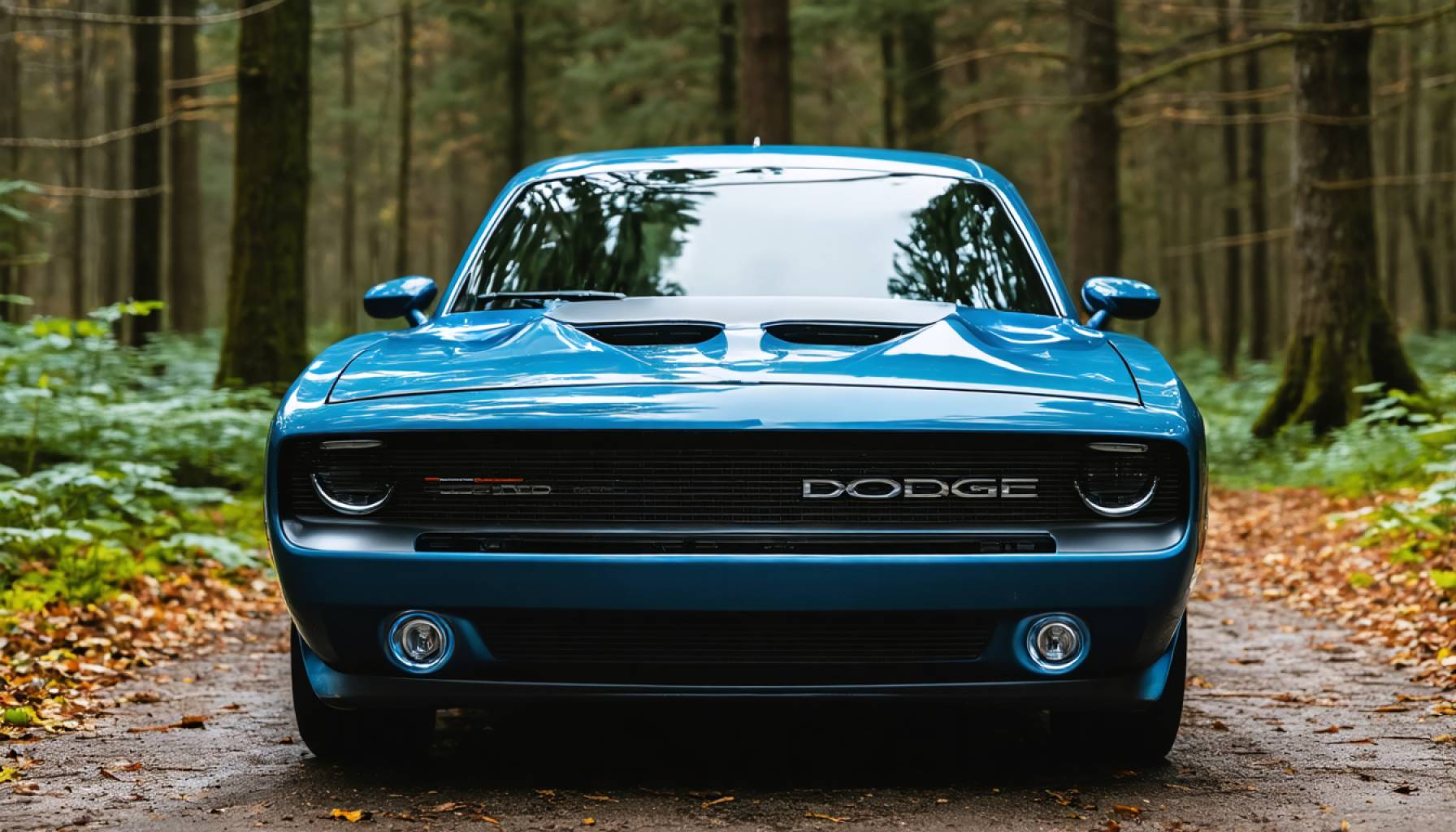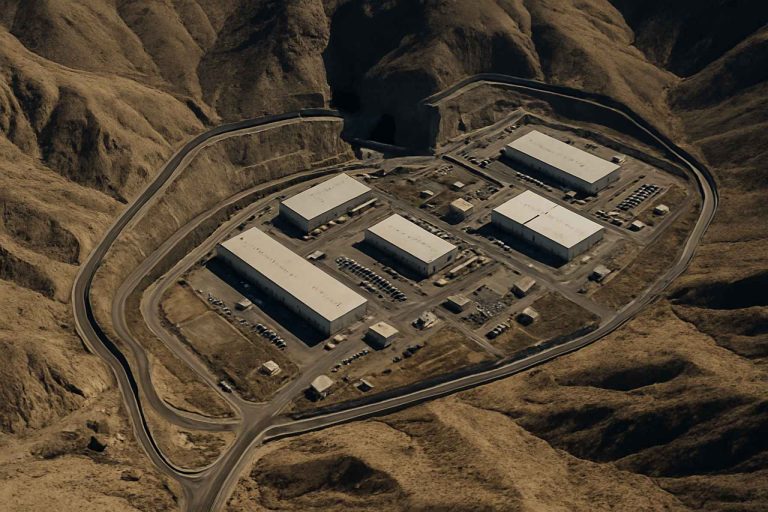
- A classic Dodge Charger and a Ford Mustang Mach-E exemplify the clash between traditional muscle cars and modern electric vehicles.
- The Charger, with its powerful V8 engine, represents raw horsepower and 1970s nostalgia.
- The Mustang Mach-E showcases silent, rapid acceleration and precision, powered by its all-electric drivetrain.
- The race illustrates the evolving automotive landscape, where high-tech innovation meets classic design.
- The victory of the Mach-E underscores the inevitable shift towards sustainability and advanced technology in the car industry.
- This event highlights that modern innovation adds to, rather than erases, automotive legacies.
The serene morning air crackled with anticipation as the nostalgic rumble of a Dodge Charger echoed through the quiet streets, a timeless roar refusing to vanish into history. Its muscular frame, a relic of 1970s power and prowess, sat poised on a track it had once dominated. Only now, it stands against a sleek adversary—a high-tech electric vehicle from Ford, whispering promises of speed without the fury of combustion.
The sun gleamed off the expectant crowd gathered at the edge of the circuit, where chrome and carbon fiber awaited the green light. On one side, the Charger, a testament to raw horsepower and uncompromising passion. Its engine, a classic V8 beating with the heart of an era defined by muscle cars, sneered at the silent, futuristic silhouette beside it—a Ford Mustang Mach-E, ready to redefine what speed means in the 21st century.
As the race commenced, the Charger launched with a familiar thunder, its rear tires clawing at the track. The Mach-E, however, surged forward in an eerie silence, harnessing the raw, instantaneous torque of its all-electric drivetrain. The duel that ensued was a vivid clash between past and present, a narrative rich in irony and revving engines.
With every corner, the Challenger strained against its own weight and limitations, reminiscent of its glory days, charging fearlessly as if to outrun time itself. The Mach-E, however, danced through the curves with a precision that seemed almost supernatural, powered by software, batteries, and a vision of progress where agility meets sustainability.
In a mere moment that seemed to stretch endlessly, the Mustang EV crossed the finish line, redefining the symbol of “muscle” for a new generation. Victory declared not only the superiority of advanced technology but also an inevitable shift in the automotive landscape. It underscored a poignant truth: that while the heart may long for the thrill of yesteryears, evolution is relentless, leaving nostalgia at the starting line.
Ultimately, this titanic showdown imparted a broader message—that the march of innovation doesn’t erase legacy but builds upon it, crafting a new horizon where classic design language and cutting-edge technology coexist and thrive, shaping the roads and racing realms of tomorrow.
The Ultimate Showdown: Classic Muscle vs. Futuristic Electric – Who Wins?
Evolution of Speed: Classic Muscle vs. Electric Vehicles
The race between the classic Dodge Charger and the modern Ford Mustang Mach-E isn’t just a battle on the track; it represents a broader dialogue about automotive evolution, sustainability, and consumer preferences. Below, we dive deeper into this thrilling confrontation, exploring the technology behind each vehicle and what this represents for the industry.
Key Features and Specs
Dodge Charger (1970s Model):
– Engine: Classic V8 engine known for its rumbling power.
– Horsepower: Approximately 375-425 hp, depending on the specific model.
– Top Speed: Around 147 mph.
– Transmission: Typically a 4-speed manual or 3-speed automatic.
– Fuel Efficiency: Approximately 8-12 mpg, a true testament to its era of unrepentant power sacrifice for speed.
Ford Mustang Mach-E:
– Engine: Electric drivetrain with instant torque.
– Horsepower: Up to 480 hp in the GT Performance Edition.
– Top Speed: Limited to around 111 mph, although acceleration is a key highlight.
– Range: Approximately 230 to 300 miles per charge, depending on the version.
– Charging Time: Fast-charging capable, offering up to 80% charge in 45 minutes with a high-speed charger.
Insights & Predictions
Market Forecasts:
– According to industry trends, the electric vehicle (EV) market is expected to continue its substantial growth, with projections indicating global EV sales could reach 45 million vehicles per year by 2040. This surge is driven by advancements in battery technology, infrastructure expansion, and changing consumer preferences towards more sustainable options.
Industry Trends:
– The emphasis is increasingly on integrating AI and machine learning in vehicle systems for enhanced performance, safety, and user experience. Automakers are transitioning to platforms that blend classic design elements with modern technology to appeal to both nostalgic and forward-thinking consumers.
Real-World Use Cases
Muscle Cars:
– Classic models like the Dodge Charger hold cultural significance and are often restored for car shows, museums, and enthusiasts’ collections. They symbolize the bold, unrestrained automotive ambitions of their time.
Electric Vehicles:
– EVs, such as the Mustang Mach-E, are rapidly becoming the preferred choice for daily commuters, conscious of environmental impacts. They are notable for lower running costs, reduced emissions, and advanced connectivity features appealing to tech-savvy users.
Reviews & Comparisons
Pros of Classic Muscle Cars:
– Unique driving experience characterized by powerful engine sounds and tangible connection to the car’s mechanics.
– Cultural and historical value, with nostalgia being a strong emotional pull for many enthusiasts.
Cons of Classic Muscle Cars:
– Lower fuel efficiency and higher emissions compared to modern cars.
– Lacks the technology and convenience features of modern vehicles.
Pros of Electric Vehicles:
– Instantaneous torque and smoother acceleration.
– Environmentally friendly with lower operational costs over time.
– Advanced safety, autonomy, and infotainment features.
Cons of Electric Vehicles:
– Limited range and charging infrastructure, though these are improving rapidly.
– Higher upfront cost compared to many combustion vehicles.
Controversies & Limitations
While electric vehicles are praised for their eco-friendliness, they also face scrutiny over the environmental impact of battery production and disposal. Additionally, car enthusiasts often debate the emotional and experiential differences between driving an electric car versus a muscle car, with EVs often seen as lacking the visceral thrill of traditional engines.
Actionable Recommendations
1. For Classic Car Enthusiasts: Consider investing in restoration kits and maintaining proper documentation and history records to maximize the car’s value and authenticity.
2. For Prospective EV Buyers: Research charging stations around your area, consider installing a home charger, and explore government incentives for EV purchases that can significantly reduce costs.
Conclusion
The race between the Dodge Charger and Ford Mustang Mach-E is a microcosm of the automotive industry’s thrilling evolution—a harmonious blend of past glory and future potential. Embrace the innovation without discarding the history; after all, the road ahead is shaped by both legacy and technology.
For further insights and updates on vehicle trends and comparisons, visit Ford and Dodge.



